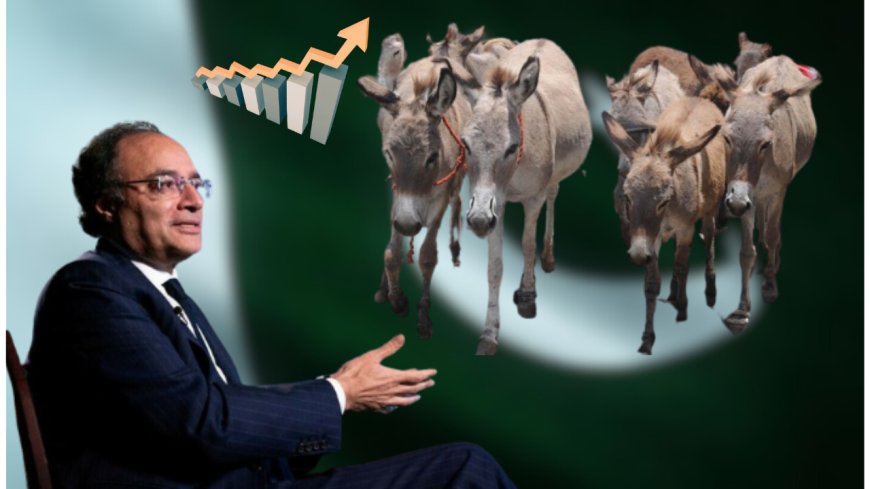Islamabad: The Pakistan Economic Survey (PES) 2023–24 has revealed a consistent and significant increase in the population of donkeys, with their numbers reaching 5.9 million this fiscal year. Known as the beasts of burden, donkeys have maintained a steady production rate, increasing by over 100,000 each year. Their population was 5.5 million in 2019–20, 5.6 million in 2020–21, 5.7 million in 2021–22, and 5.8 million in 2022–23.
Pakistan Finance Minister Muhammad Aurangzeb presented these details, along with data on other livestock populations, which contribute significantly to the agricultural sector, accounting for at least 60.84 percent of it. The cattle population has increased to 57.5 million, sheep to 32.7 million, goats to 87 million, and buffaloes to 46.3 million. Aurangzeb highlighted that the livestock sector is vital for rural families, contributing around 35 to 40 percent of their total income.
Livestock production has shown robust growth, increasing by 3.70 percent in the previous fiscal year and 3.89 percent in 2023–24. This sector constitutes 14.6 percent of Pakistan’s GDP and involves over eight million rural families, making it a crucial part of the rural economy. Despite broader economic struggles, the livestock sector has emerged as a primary force behind agricultural growth.
The gross value addition of the livestock sector has also seen a positive impact, rising from Rs 5,587 billion in FY-2023 to Rs 5,804 billion in FY-2024, growing at a rate of at least 3.9 percent. The consistent increase in the donkey population reflects growth in the agricultural sector and signals positive development trends.
The government has prioritized the agricultural sector for economic growth, poverty alleviation, and food security, focusing on supportive policies and investments. The Pakistan Economic Survey report outlines strategies to support livestock through private sector-led development and policy interventions. Regulatory measures aim to enhance animal productivity by improving veterinary health, husbandry practices, animal breeding, assisted reproductive techniques, artificial insemination services, balanced animal feeding, and controlling livestock diseases such as FMDE, PPR, LSD, and Avian Influenza.
In summary, while Pakistan's economic indicators show challenges, the livestock production sector has solidified its position, contributing significantly to the country's agricultural growth and rural economy.








